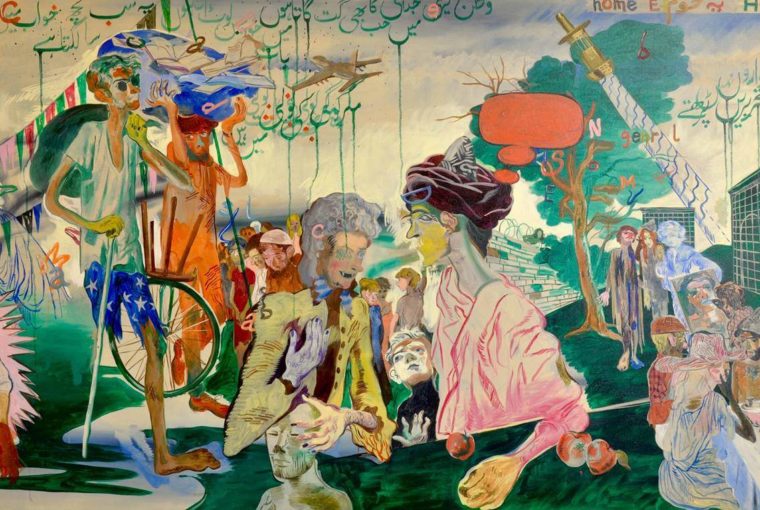Five Noteworthy Artists of Pakistan
Part 1 – Discovering Contemporary Artists
By Anum Lasharie
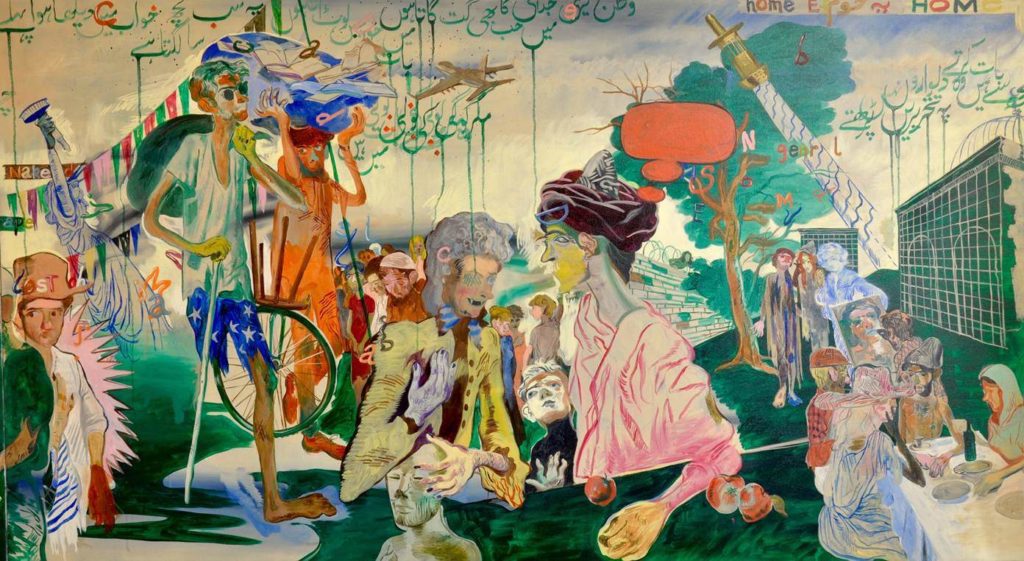 1. Salman Toor
1. Salman Toor
Salman Toor’s work at first glance looks playful, overflowing with colour and figurative images that seem very relatable to our society and culture. Although, Toor is commenting on the tense relationship between the privileged and the poor in a highly divided society. Through his work Toor creates a dialogue between the ideas of the working class and extravaganza, between high morals and corruption. Toor uses images from both art history and popular culture and brings forth his own experiences with the “serving lower class”. Toor is living and working in Brooklyn, he received his MFA in painting from the Pratt Institute in 2009.
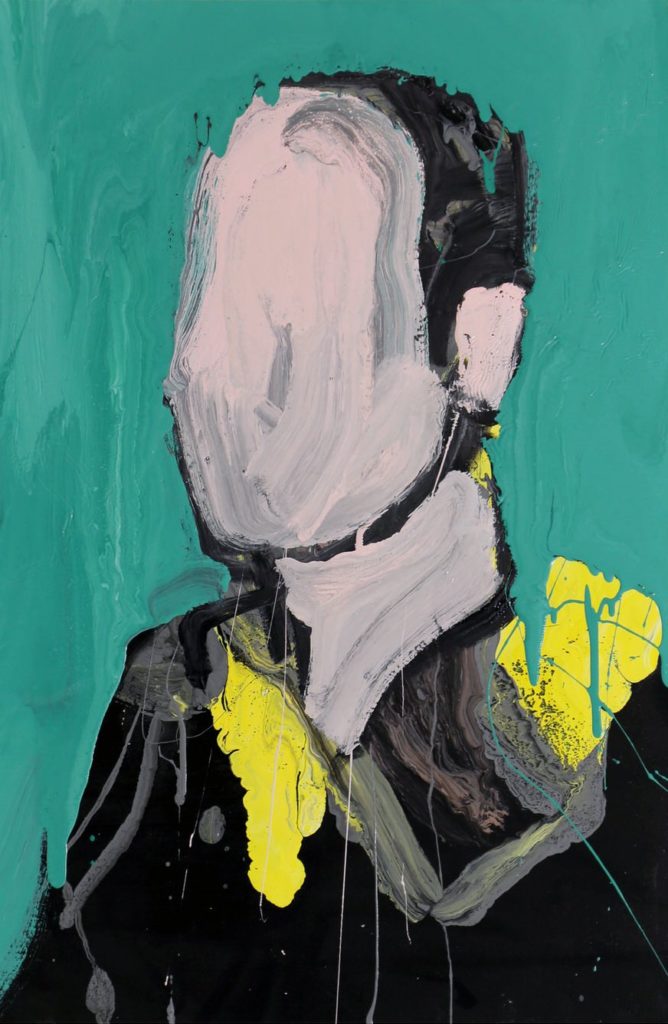 2. Abdullah Qureshi
2. Abdullah Qureshi
Abdullah Qureshi is the Founder of Gallery 39K in Lahore. An artist, mentor and teacher, who has worked with the British Council Pakistan as Senior Consultant Arts Projects and Partnerships. Qureshi’s work responds to a post-abstract expressionist dialogue in Painting, within his practice, he creates images that expand upon traditions of abstraction and representation. Often quite gestural, he is interested in creating large abstract spaces that play with a central floating form, sometimes hinting towards a tree trunk, at others a chair like structure, and at times, simply just a heavy, dense black object. In the past, these have come from being interested in processing memories, using objects of interiors as visual symbols, looking at them from a psychoanalytic lens to translate a personal history of abuse, questioning home and belonging.
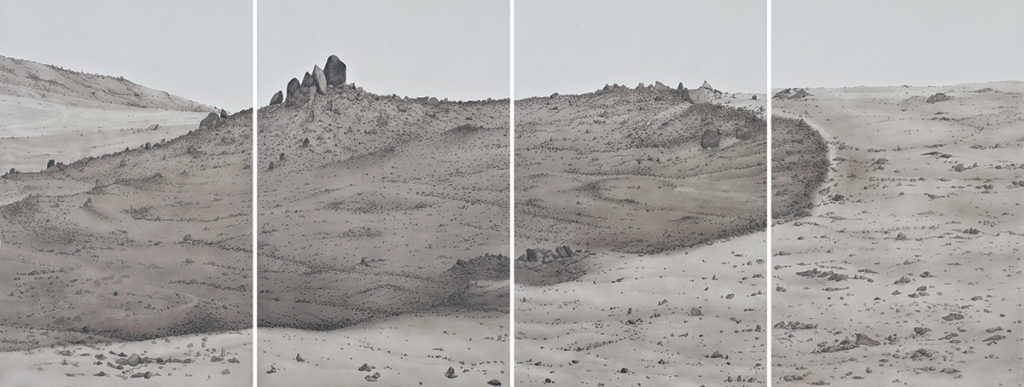 3. Ali Kazim
3. Ali Kazim
Ali Kazim was born in Pakistan and currently lives and works in Lahore, Pakistan. He received his BFA degree from the National College of Arts, Lahore, in 2002 and an MFA from the Slade School of Fine Art, London, UK, in 2011. The artist’s most recent work depicts rocky landscapes on a huge scale, plains scattered with rocks and boulders, details of broken ruins of terracotta pottery on paper. He also made Sculptures resembling rocks to easily transport the viewer into the paintings. Kazim lives close to the site of Harappa, the ancient city of the Indus Valley civilization. He was inspired by remnants of former societies and is fascinated by ruins and lost eras. Kazim worked in the field of visual arts for the past 11 years. His work exhibited widely in solo and group shows internationally.
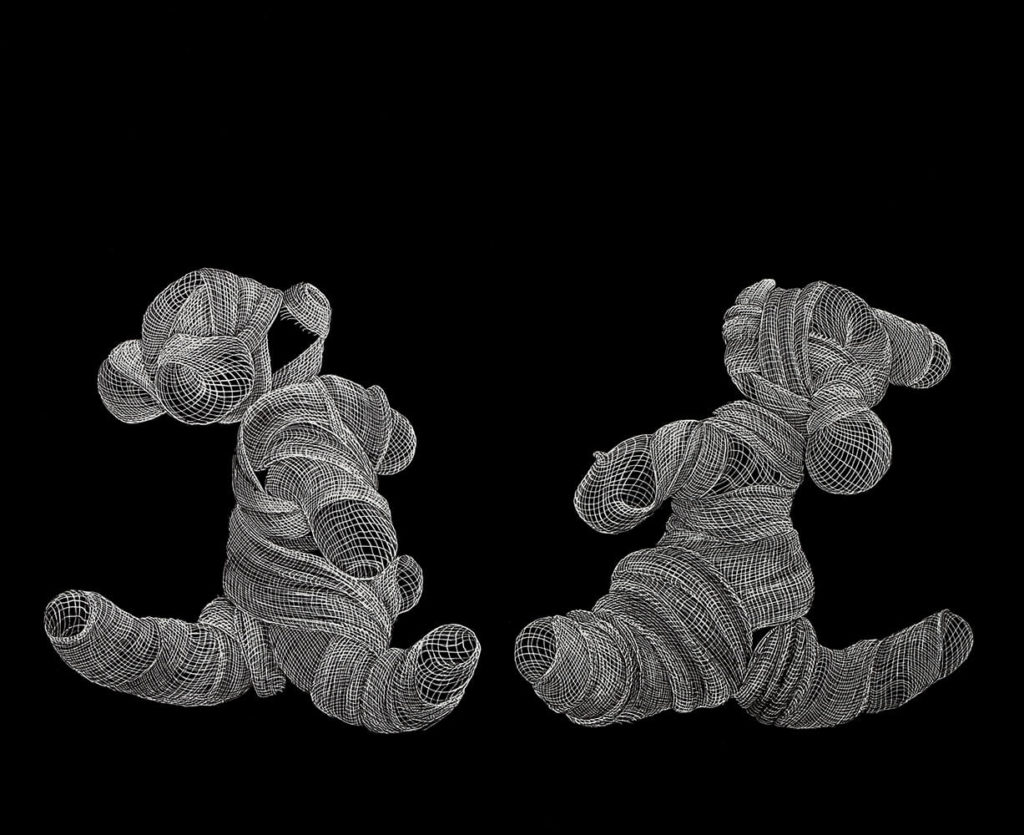 4. Adeel uz Zafar
4. Adeel uz Zafar
Adeel uz Zafar was born in Karachi, Pakistan in 1975. He completed his BFA from National College (NCA) Lahore, graduating in 1998. After college, he returned to Karachi and joined Karachi School of Arts as an instructor. Zafar associates his childhood memories and his perpetual dealing with subjects for children as the core of his imagery development. He symbolises this bandaging manipulation as the delusive asperity. He alters the dainty and soft characteristic of a stuffed toy for example, by transforming the identity of the object, driving it into the rather serious orientation. Zafar’s flamboyant command over the painstaking patterned strokes may appear principled to miniature craftsmanship, the enormous scale of the work segregates him from the existing league of contemporary miniature artists.
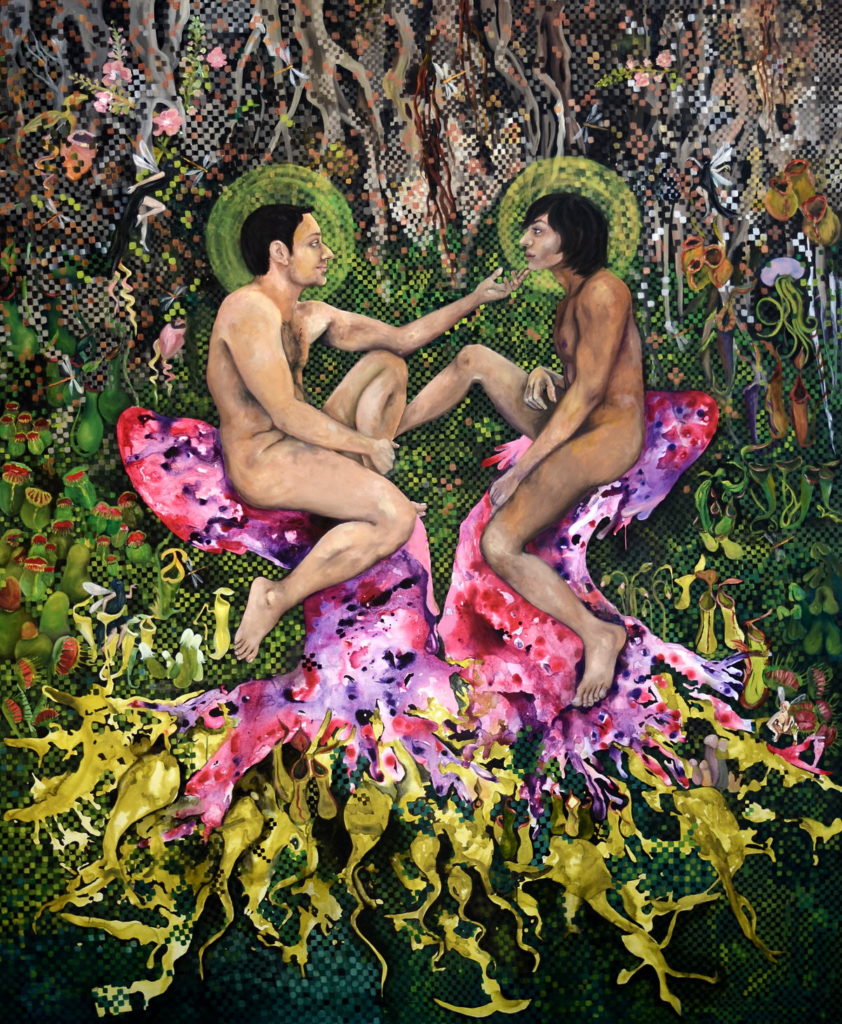 5. Amra Fatima Khan
5. Amra Fatima Khan
Amra Khan is a resilient visual artist that lives and works in Lahore. She graduated from National College of Arts with a distinction in painting in 2008. She did her masters in visual arts from National College of Arts Lahore, with a semester in École Nationale Supérieure des Beaux-Arts (ENSBA) Paris, France from 2010- 2011. She is skilled in oils, acrylics and miniature painting and often expresses her talents through sculptures and video installations. Her work tends to revolve around having two poles and different ideas or personalities living in the same body, Conflicting gender, power and identity. She works to speak through and incite the observer to question tangibility.


